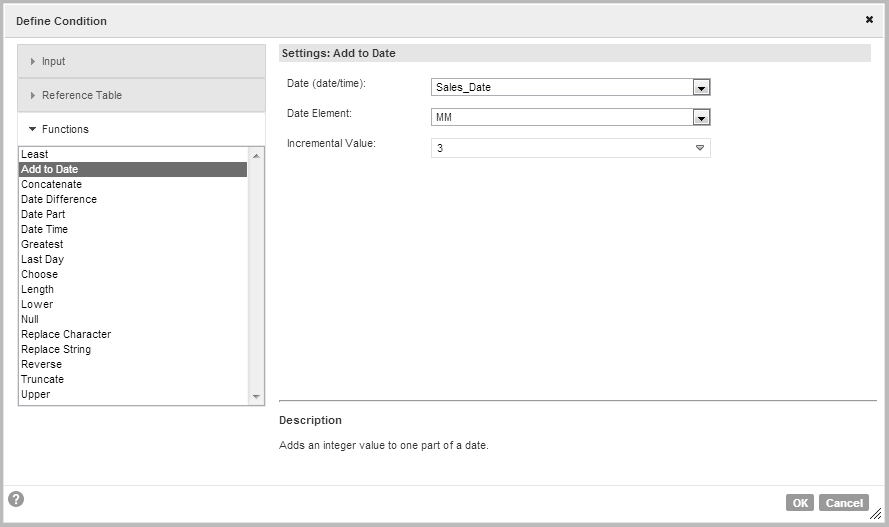Conditions
A condition defines the type of analysis that the rule statement performs on input data.
To configure a condition, select the condition field in a rule statement. When you select a condition field, you open the Define Condition dialog box.
The following image shows the Define Condition dialog box:
The Define Condition dialog box includes the following condition types:
- Input
- Use to select the data values to compare to the rule statement input data.
- Reference Table
- Use to select a reference data set to compare to the rule statement input data.
- Functions
- Use to define a function to apply to the rule statement input data.
Types of Condition Analysis
When you configure a condition, you select the input data to analyze and you select the type of analysis to perform.
Configure a condition to perform one of the following types of analysis:
- Compare the input data to a value that you enter.
- Configure the condition to compare the input data values to a specified value. The condition determines if the data values match.
- For example, configure a condition to identify data values that include the year 2014.
- Compare the input data to the values in a reference table.
- Configure the condition to compare the input data values to the values in a column of reference data. The condition determines if the input data match any value in the reference data column.
- The condition reads all the data values in the reference table.
- For example, configure a condition to compare a column of product codes in a data set to the formal list of product codes in the organization.
- Apply a function to the input data.
- Configure the condition to apply a function expression to the input data and determine if the data satisfies the function parameters.
- For example, configure a condition to evaluate if a number is the highest number in a range that you specify.

